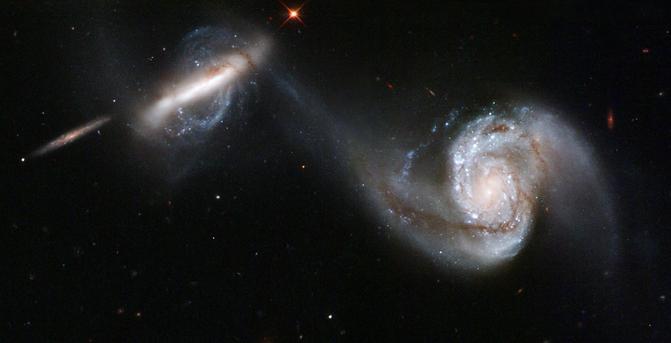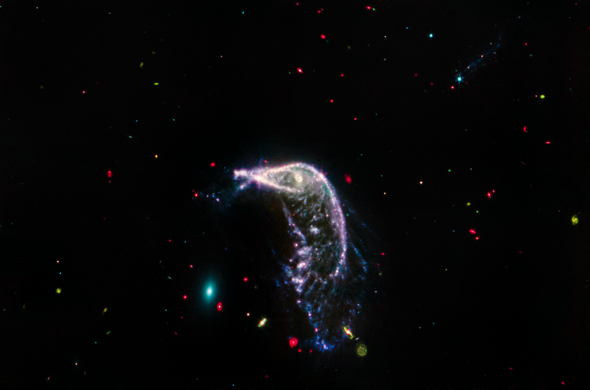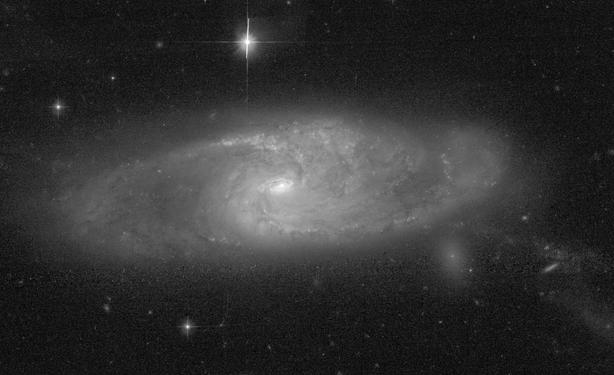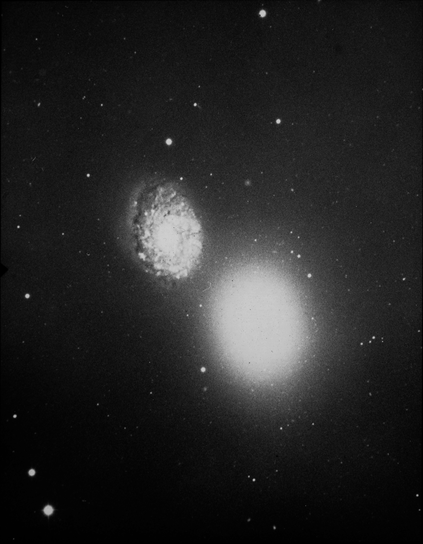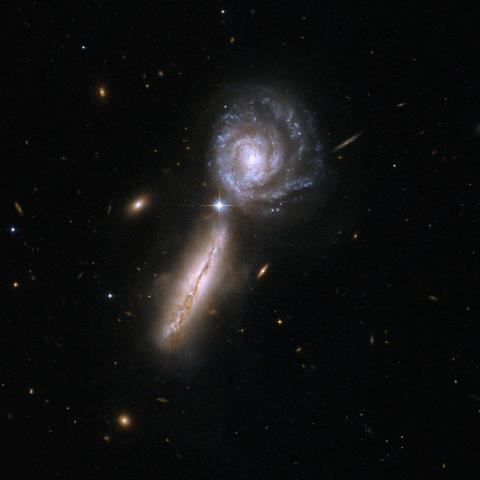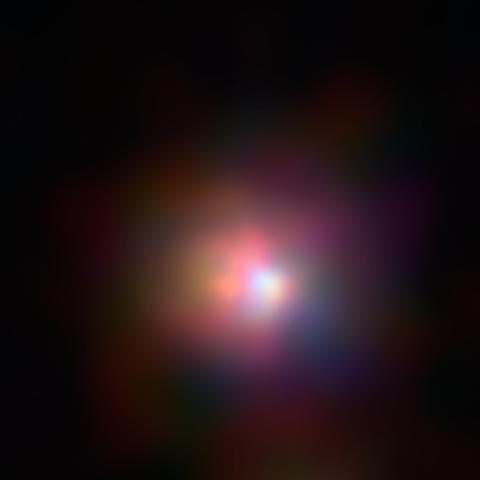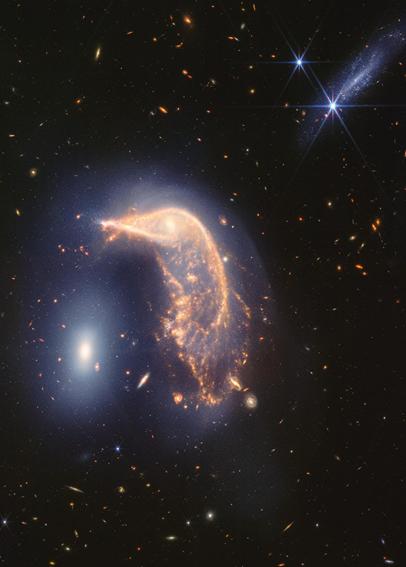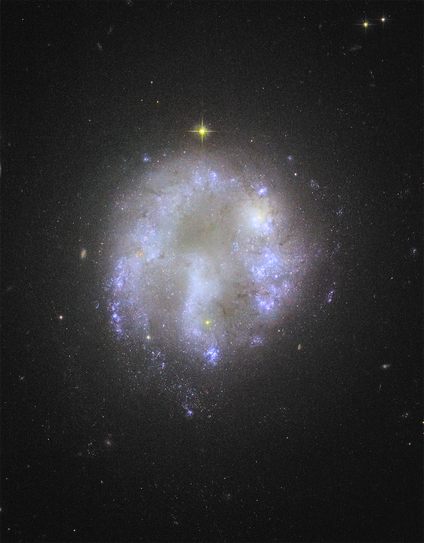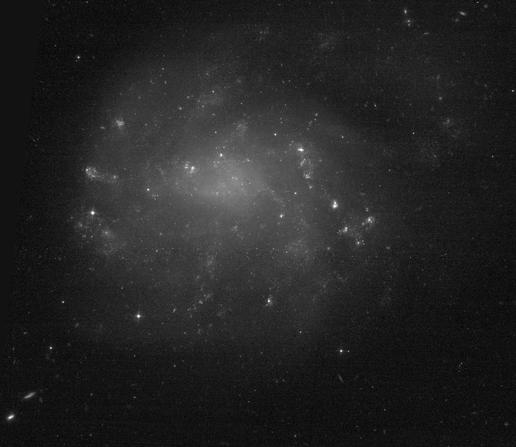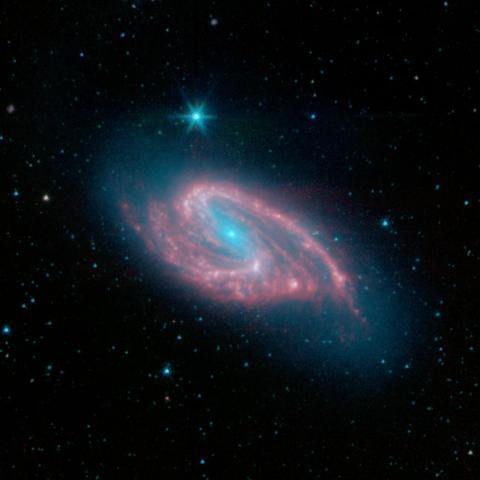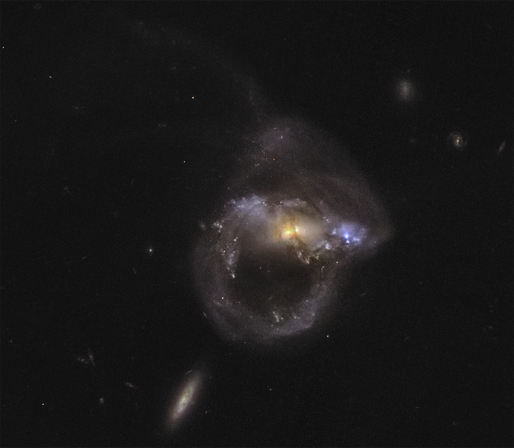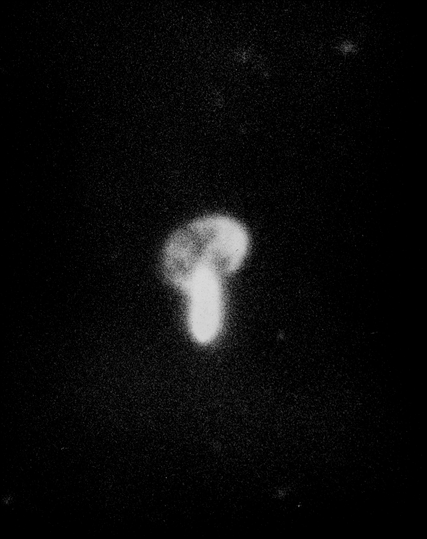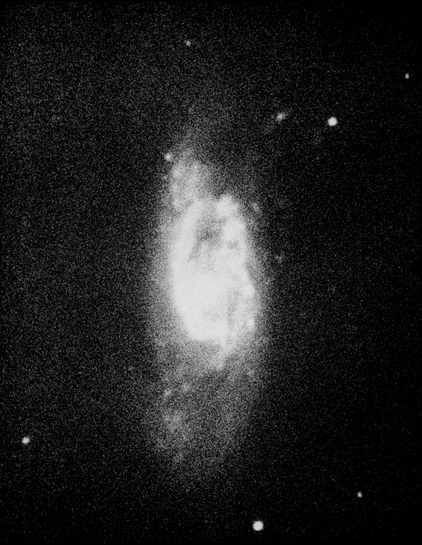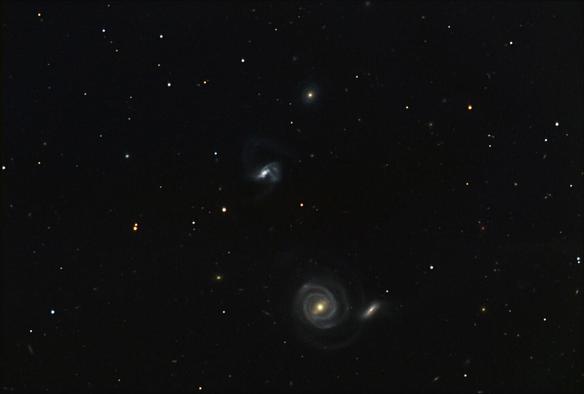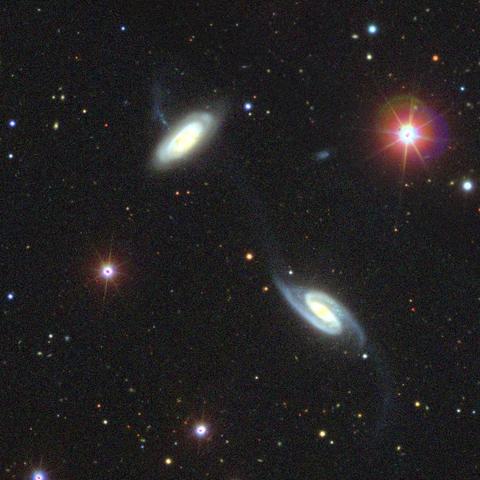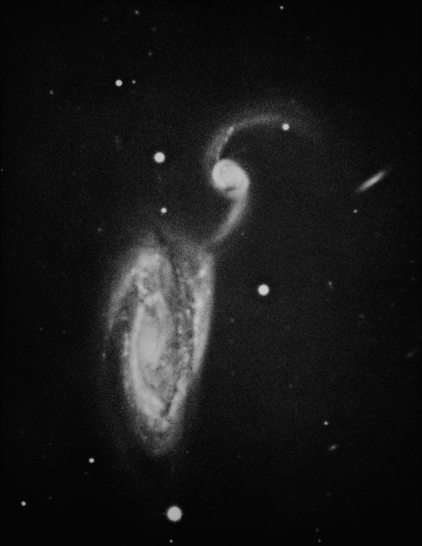Hubble image of Arp 87, also known as NGC 3808 and NGC 3808A.
NGC 3808 (right) is a nearly face-on spiral galaxy with a bright ring of star formation and two spiral arms. It is interacting with its companion NGC 3808A (left). NGC 3808A is seen edge-on and is surrounded by a ring of stars and gas perpendicular to the plane of its disk, making it a polar ring galaxy.
Credit: NASA, ESA, and the Hubble Heritage Team
Source: https://science.nasa.gov/asset/hubble/interacting-galaxy-pair-arp-87/
